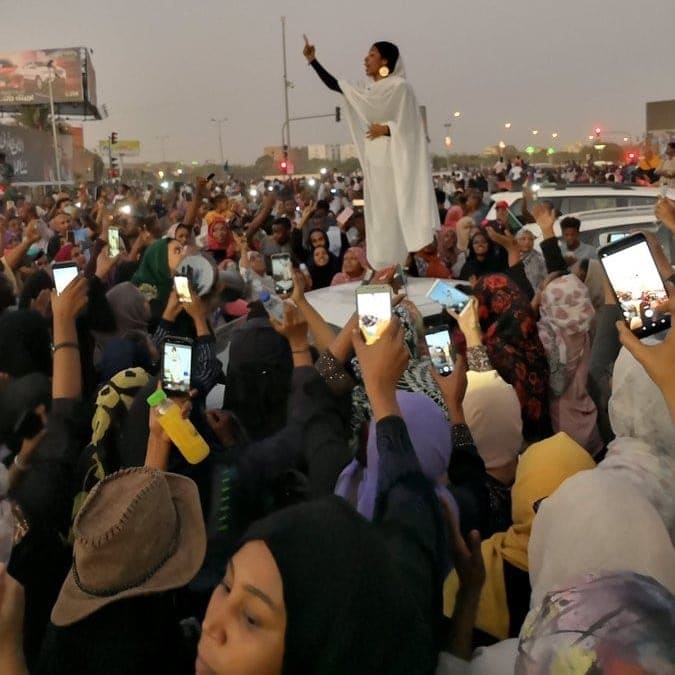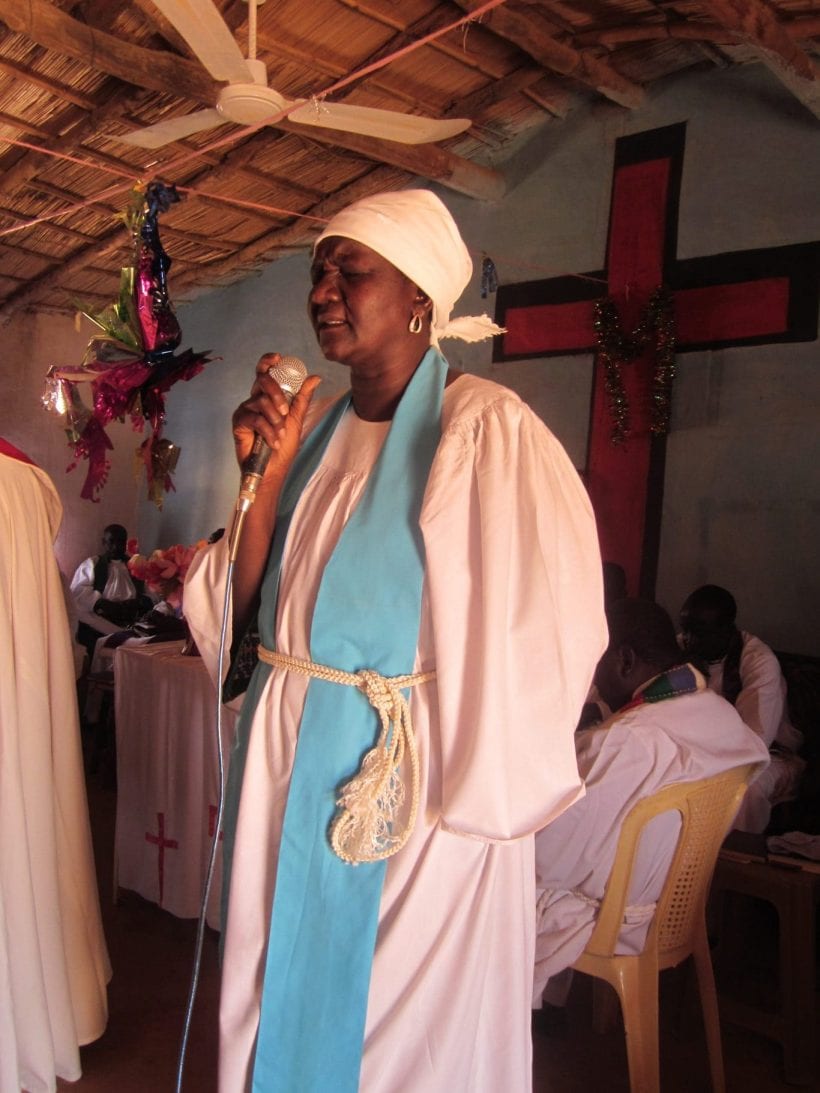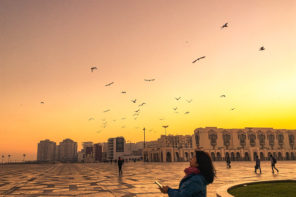The Sudanese revolution had slowly been gaining recognition since December 2018, when, in April 2019, a photo of women’s activism pushed the protests into the international spotlight. This now iconic image has become the most recognized symbol of the revolution, having been circulated and reproduced as murals, digital memes, on Twitter and Instagram, as well as on billboards. Sudanese protestors call these women Kandaka, Nubian Queens, referring to the female monarchs of Meroe in the Kingdom of Kush (260 AD – 320 BC) in today’s Upper Egypt/northern Sudan, who at times ruled independently and led armies.
Modern Sudanese often refer to Nubia to assert the glory of their African past, a history that long predated the arrival of Arabs in the 7th century. But Nubia is where today’s Arab-Muslim socioeconomic elite claim to originate, and the Nile Valley today remains the power centre of Sudan. Kandaka, however, have become a rallying cry against those very elite who control the government since 1989, a regime using Islam to justify oppressive policies, not least are those which compromise women’s rights to sexual and reproductive well-being. These modern Kandaka are now claiming justice for decades of misogynist policies and offences. The young protestor in the image above is chanting “They imprisoned us in the name of Islam, they burned us in the name of Islam, killed us in the name of Islam”. In these protests, women vocally claim for justice, transformation, truth and reparations. Women also held the White Robe (towb) march, to denounce the loss of Sudan’s innocence under the denounced president Omar El Bashir’s military regime. They highlight misogynistic policies inscribed in the Public Order Law which requires women to “dress modestly”, cover their hair, wear long skirts, and not to loiter in public spaces with men.
In parallel, a Facebook group known as Minbar Chat exploded in membership. It was originally a group run by women to expose sexual harassment or adultery by men. Pictures of abusers were posted alongside their families, to shame them publicly and to warn other women. This group has now transformed into a powerful tool against the abuses of the regime – photos of military, police or security personnel who inflict (sexual) violence against women are circulated, commented on and used to expose and denounce these so-called “protectors”. As was explicit in the mass rapes carried out against protestors on June 3, 2019, outspoken activists are frequent victims of sexual violence by security forces.
As is known, mass rape was/is prominent in the Darfur conflict, the rationale being that violating the female body also violates the opposing group as a whole (Hale 2015). But Sudan’s culture of sexual and gender-based violence is not only a part of warfare, refugee camps and protests. It is part of misogynistic thinking at multiple levels, entrenched in communities, the legal, healthcare and protection services but linked to national and international biopolitics and Salafi ideology (Lamoureaux 2018).
It is in effect a state-supported attempt to control public morality, exercised on women’s bodies. In this model, women are portrayed as temptresses to be kept on a short leash or else they will inevitably draw unsuspecting men into illicit relationships, or they are naïve and need protecting.
Either way this disciplining/protecting is about controlling the female body. It is not just prejudice; it is legally inscribed in the sharia-based justice system, where policies are geared towards finding evidence for women’s immoral behavior and punishing it. Any man working in the military, the security service, or the police has total impunity for rape. Women wearing trousers are punishable by lashes. The 1991 Criminal Law still confuses ‘rape’ (ightiSaab) with adultery (zina), by default incriminating victims unless they can prove their lack of consent with four male witnesses. Punishment for zina is stoning to death and for extramarital sex is fifty lashes. Police stations are planted in every public and some private hospitals; doctors must report cases of sexual violence before they can treat victims. Police are informed of pregnancies when the husband is absent. Abortion is illegal unless to save the mother’s life.
Justice for women in Sudan’s revolution?
Ironically, the white towb (dress) worn by the Kandaka in the picture above, is a status symbol of respectable professional women in Sudan, by those who uphold and legitimize the Arab-Islamic model for society. It is an index of purity and chastity when out in the public space of men, a metaphorical marriage with the government for working women. It is the dress worn for invisibility, as a morally uncompromising way that women can participate in public life – as stateswomen, civil servants and teachers (Willemse 2001). No one can justifiably sexually harass this kind of woman. But why is this the image of a woman symbolizing the revolution?
As some observers have pointed out, women’s activism today not only has a long precedent in Sudan, but that it elides older forms of activism by marginalized women. I share this observation. The focus on Kandakaat obscures inequalities between those who claim to be descendants of those Nubians and the rest of Sudan – the East, the West, and the South, where relations of inequality regarding governance, citizenship, the military, economic integration, education and cultural recognition have led to almost constant regional wars since independence.
Displaced Nuba and sexual and reproductive health
What about women, who, due to (pre/post)colonial histories of divide and rule, and unequal centre-periphery socioeconomic relations, have never donned a white towb? Those working in the informal sector, with little or no formal education, living destitute in one of the many displaced communities at the edge of Khartoum? Without denying the sacrifice and suffering of elite women in the protests, displaced women have suffered immeasurably from the Sudanese government’s policies – carried out partly through sexual violence, as is well-known for Darfur, but also notably in the Nuba Mountains.
This extends beyond the grossest violations to all the sexual and reproductive health troubles that the female body can suffer in displacement – the increased likelihood of prostitution and transactional sex; those working in the market selling-tea or brewing alcohol are at greater risk of SGBV due to their purported immoral profession, sitting out in market spaces reserved for men. Such precarity lends itself to poor mental health, despair, unwanted pregnancies, dangerous abortions and STD/HIV infections.
Nuba people are not the same as Nubians; they originate from the Nuba Mountains, an elevated rocky region surrounded by farm lands in southern Sudan. While today they unite under the label Nuba, they are made up of roughly fifty ethnic groups and languages, identify as Black and African, and practice Islam, Christianity and shamanism. Forced Islamisation and Arabisation have resulted both in widespread integration into and resistance to the way of life of the elites of the Nile Valley (Rottenburg, Ille, and Lamoureaux forthcoming). Since the 1980s (with a hiatus), a war has been going on in the Nuba Mountains between the government and the Sudanese People’s Liberation Army, now (SPLA-North) – forcing over a million Nuba people from the Mountains into refugee camps and cities across East Africa, Europe, the US and Australia.
Missing from images of the revolution (with some exception) are the Nuba women with whom I carried out my doctoral research. I asked my research assistant, a Nuba woman living in a resettled migrant community at the outskirts of Khartoum, if the local outspoken and activist Christian women in the community were participating in this revolution. She replied: “Some women support it, but most of them are saying, let Arabs protest among themselves because they don’t want Black people, and sometimes they kill us when we want to shout.” She was referring to the danger of being visible, Black, Nuba and in her case Christian.
Public visibility is a luxury that few women can afford, unless they can purchase treatment, discretion and care by avoiding public services.
From this perspective this is not their revolution, but an Arab-Muslim one, although their grievances are against the same oppressor.
Claiming moral worth through justice or justification?
The woman above also wears a white robe, here, indexing the ‘mothers’ of the Episcopal Church of Sudan. I took this picture in 2012 in Dar-es-salaam, a neighbourhood of now resettled Nuba and Darfuris in Khartoum’s western periphery, when the war in the Nuba Mountains resumed. My research centered on Christian Nuba Moro women’s activism in this context. I found that reading, writing and speaking in prayer or sermons enabled women to participate in an ethnonational movement, built on the problematic of a moral breakdown due to fragmented families, the loss of community, the destructive life in the city – in the “wilderness” and “among the Arabs”.
Two forms of opposition to Arab-Islamic domination emerged. One line of reasoning oriented towards modernity, recognition and claiming rights; the other focused on recovering so-called lost values among Moro Nuba themselves. The former discourse applied to masculine domains of speaking, ethnic nationalism, engagements with NGOs and activism that could take place in public at the interface with Arabs and other ethnic groups. The latter discourse was feminine, nostalgic, and looked to the purity of the past, and the female body for the recovery of the community.
In this latter discourse, women, as the embodiment of the community, bore the brunt of the moral crisis and the tools to remedy it could be found in Christian values: love, learning, forgiveness, charity and compassion, as the path to a modern moral community. Church women encouraged others to make amends with abusive, alcoholic and unemployed husbands, give their money to them, prepare their meals, clean their homes, raise educated children, and steer away from the dangers of life among Arabs – not to mingle with Arabs in the market, to marry among Nuba Christians, and keep the community pure by exercising bodily self-control. Many debates addressed the moral breakdown through its core concerns of the sexual and reproductive body: blood, breastfeeding, STD/HIV transmission, hygiene and cleanliness, circumcision, barrenness and fertility, adultery, polygamy, virginity and prostitution.
Differently from the Kandaka protesting in the revolution, these women did not single out distinct bodily injustices in a mode of moral individualism. Rather, their concern was that through individual acts of self-control, community morality could also be restored. It wasn’t about individual rights but about self-transformation.
Asserting worth was about justifying it in a context of impossibility. I drew on a model of justification from the pragmatic sociology of critique (Boltanski and Thévenot 2006) to argue that women appeal to a hierarchy of shared values, through which they could claim virtue in spite of the bodily injustices they may have experienced. A mother might justify transactional sex with the need to pay her children’s school fees; a woman in a polygamous marriage might restore her worth through church activism; or an abortion is justified since the father was a Muslim.
Such justifications are about restoring feelings of bodily integrity, rather than legal reparations. This undoubtedly requires a definition of justice unlike that of ‘restorative justice’ through truth commissions – one that accounts for worthiness. In a situation of prolonged displacement, and precarity, justification, or even justice, is claimed through redeeming practices of establishing worth.
References
Boltanski, Luc, and Laurent Thévenot. 2006. On Justification: Economies of Worth. Princeton University Press.
Hale, Sondra. 2015. “By Any Other Name: Gender and Genocide – Women of Darfur and the Nuba Mountains.” In Sudan’s Killing Fields: Political Violence and Fragmentation, edited by Sondra Hale and Laura N. Beny, 201–16. Trenton, NJ: Red Sea Press.
Lamoureaux, Siri. 2018. “Registers of Justice and Feminine Agencies in Sexual Violence in Sudan.” 28. Priority Program 1448. Leipzig: German Research Foundation.
Rottenburg, Richard, Enrico Ille, and Siri Lamoureaux. forthcoming. “Nuba.” In Encyclopaedia of Islam, 3rd ed. Leiden: Brill.
Willemse, Karin. 2001. “‘A Room of One’s Own’: Single Female Teachers Negotiating the Islamist Discourse in Sudan.” Northeast African Studies 8 (3): 99–127.
Featured image (cropped) by Lana H. Haroun










